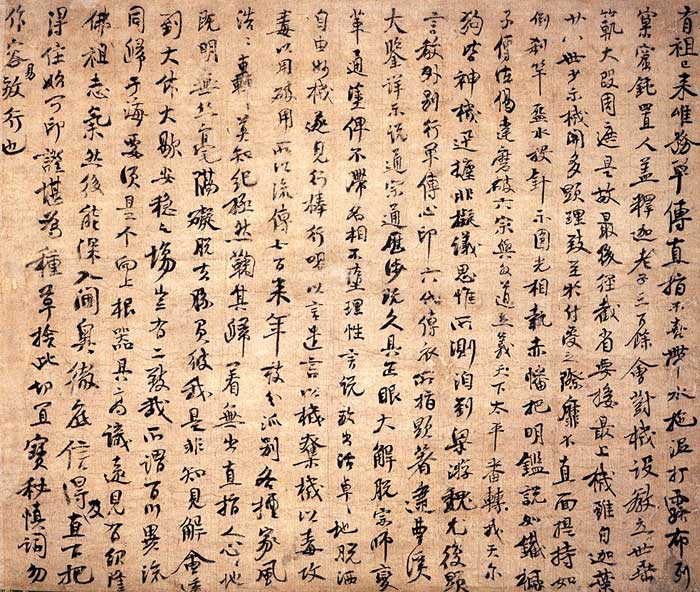Wanwu Keqin (1063-1135) was an eminent monk in the Song Dynasty of China. He was a native of Chongning, Sichuan, and his common surname was Luo. Born into a scholarly family that has admired Confucianism for generations. When I was visiting Miaojiyuan at the age of eighteen, I saw Buddhist scriptures and couldn't put them down. I sighed and said, "I must have been a monk in my previous life!" Then he resolutely stepped into Buddhism.
After receiving full precepts, he studied scriptures and commentaries in accordance with the Yuanming Dynasty in Chengdu. Later, he went to Wuzu Mountain to attend the Dharma performance and was confirmed by him. He is as famous as Buddha Mirror Huiqin and Buddha Eye Qingyuan. He is known as the "Two Diligences and One Yuan" in the world, and is known as the Three Heroes of the Jungle. In the early years of Zhenghe's reign, he arrived in Jingzhou. Zhang Wuwuli, a famous scholar in the world, paid him a courtesy visit and discussed with him the essence of Huayan and the interests of Zen sect. At the invitation of the governor of Lizhou, he lived in Lingquan Temple in Jiashan. At that time, at the request of Privy Councilor Deng Zichang, he was given purple robes and the title of "Foguo Zen Master". In the last years of Zhenghe, he was ordered to move to Jiangshan in Jinling, which greatly promoted the sect's style. Later, he lived in Jinshan. When Emperor Gaozong was lucky enough to be in Yangzhou, he ordered him to join the imperial family and gave him the title of "Huanwu", which was also known as "Huanwu Keqin" in the world. Later he returned to Zhaojue Temple in Chengdu. He passed away in the fifth year of Shaoxing and lived for seventy-three years. He was posthumously named "Zhenjue Zen Master". His disciples include Dahui Zonggao, Huqiu Shaolong and other Zen sects Long Xiang. Zeng once collected hundreds of ancient poems written by Xuedou Zhongxian in Biyan of Jiashan Mountain, and compiled them into ten volumes of Biyanlu, which is known as the first book of Zen in the world. This book was originally regarded as a secret book by his disciple Zong Gao and was not taught by fire. Burned and republished for later generations. In addition, there are twenty volumes of sayings by Zen Master Wanwu Foguo.

Wanwu Keqin's "Yin Ke Sha", paper, running script, 43.9 x 52.4cm, collected by the Tokyo National Museum, Japan (gift from Matsudaira Naoryo)
This piece is the first half of the "Yinkezhuang" that Wanwu Keqin gave to his disciple Huqiu Shaolong. It is also the oldest existing Zen monk's writing (Yinkezhuang refers to the proof that Zen recognizes the practitioner's enlightenment and allows him to inherit the method). The content describes how Zen was introduced to China from India and divided into various schools in the Song Dynasty, and explains the spirit of Zen. Although the calligraphy style does not follow a fixed style, it has an indifferent interest achieved through rigorous practice. Since ancient times, it has been regarded as the first calligraphy of Zen monks by tea ceremonyists and has been highly valued.
It is said that the calligraphy was encased in a paulownia wood cylinder and drifted to the coast of Bonotsu in Satsuma (present-day Kagoshima Prefecture), hence the name "Ryuwa Satoru". It was first collected by Daitoku-ji Daisenin and Sakai City's wealthy merchant and tea ceremony master Tani Sotaku. Later, Furuta Oribe cut it into two sections at the request of Date Masamune. The first half was soon transferred to the collection of Shounji Temple. Later, Matsudaira Fumo, the well-known tea ceremony master of the Matsue Domain, acquired the current work in exchange for giving Shounji Temple 2,500 taels of gold and 30 large bags of rice every year.








